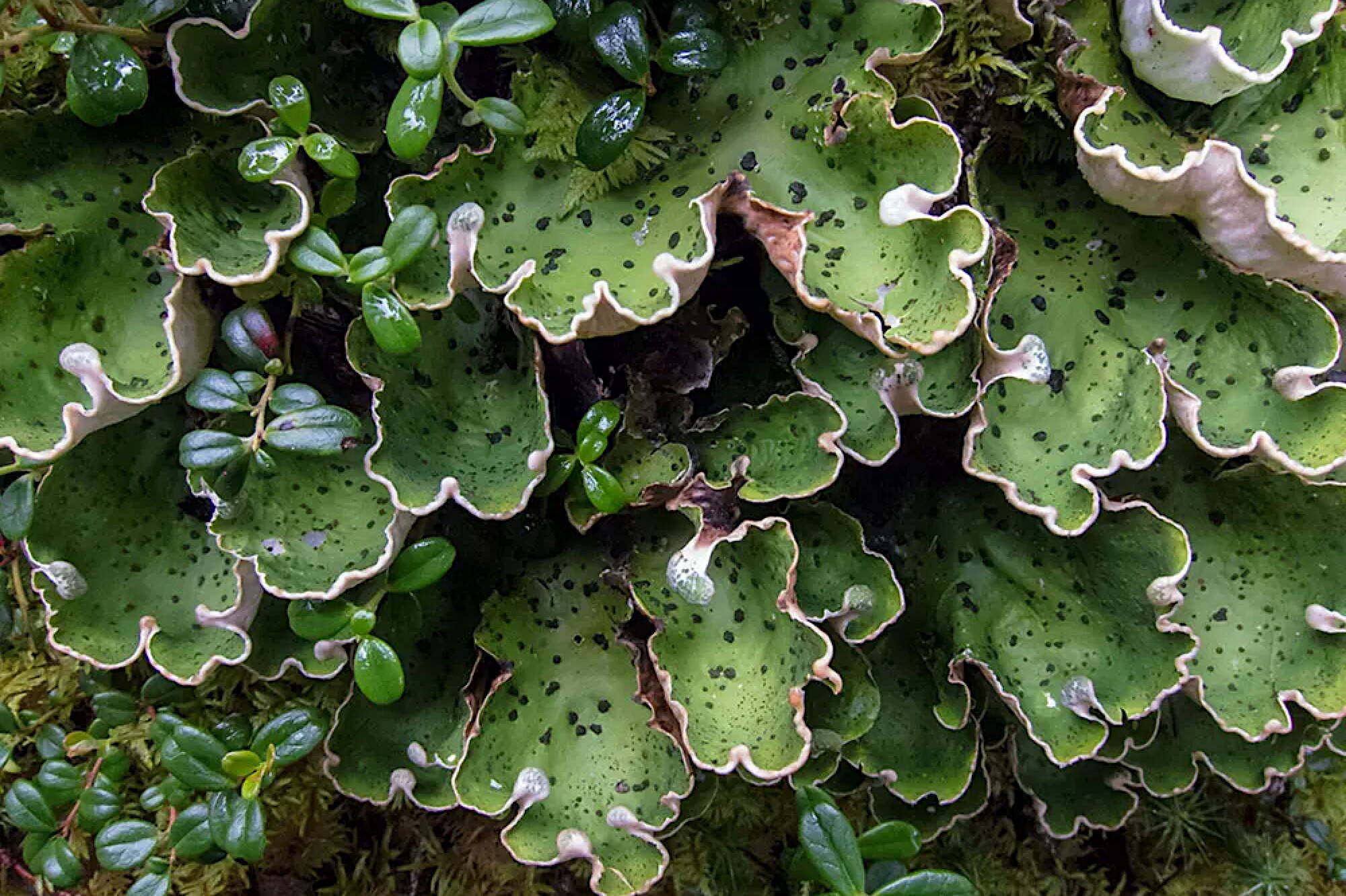The Latin roots of the word “symbiosis” mean living together. In the broadest sense, symbiosis refers to any close association of two (or more) different kinds of entities.
A familiar example of symbiosis is provided by lichens; a typical lichen is formed by an alga and a fungus (and often some other partners too, such as bacteria and additional fungi) living intimately together, sharing resources. Other examples include algae that live with corals, nitrogen-fixing bacteria that live with plants, colorful clownfish that live with anemones, and so on. The concept of symbiosis broadly includes parasitism, in which one participant benefits but the other is harmed, commensalism, in which one participant benefits without harming the other, and mutualism, in which both participants gain something. These relationships are not as exclusive as one might think, because one can evolve into another. For instance, a parasitic relationship can evolve into a mutualistic one (and vice versa).
Some microscopic symbiotic relationships have been critically important in the evolution of life on Earth, going back many millions of years. Although the idea had been around for a long time, and considered a bit by scientists, it wasn’t until the 1960s that a wide-minded scientist vigorously revived the hypothesis that symbiosis was so fundamentally important; even then, controversy raged for several years before the idea was confirmed by genetic analyses and generally accepted.
The basic idea is that cellular organelles (minuscule entities bounded by a membrane, which house essential activities inside a cell) originated when bacteria were engulfed by other microbes and ultimately became permanent associates. In particular, mitochondria (central to metabolic activity and many other functions) originated when certain bacteria were taken up by another kind of one-celled organism (classified as Archaea). The “adopted” entities eventually lost part of their genetic material, often transferred to the “host,” but enough remained within the organelles to help demonstrate that the remaining genes were not closely related to the “host,” but rather to other bacteria. Furthermore, mitochondria multiply by division, just as they did when they were independent cells. The new, combined type of organism evidently had some advantages and became the basis for the evolution of all more complex organisms, including animals, plants, and fungi.
In a similar way, chloroplasts (organelles in plant cells that house chlorophyll, a molecule that’s essential to photosynthesis, which generates carbohydrates and oxygen) are thought to have originated when photosynthetic cyanobacteria were engulfed by early algae that already had cell nuclei (this may have happened more than once!). Chloroplasts have a reduced genome (some genetic elements have been transferred to the “host”), but with some genetic similarities to existing cyanobacteria. That combination eventually led to the evolution of plant diversity.
Descriptions of these early associations typically mention one microbe engulfing the other, but what if the “adopted” one actually initiated the relationship? I have not yet found any information about which participant may have started the association. Given that bacteria commonly exchange genetic material, often by coming in contact with each other, perhaps it is not such a big step to a more intimate relationship. Bacteria do not have nuclei, mitochondria, or chloroplasts, all of which have membranes enclosing them, although they do have genes and metabolic machinery, and some of them have chlorophyll. Bacteria are enclosed in outer membranes, which may have become the membranes of the organelles, when a bacterium was incorporated by another unicellular organism. Undoubtedly, the initial relationship underwent considerable refinement as evolution continued… genes were transferred from one entity to the other, proteins moved around, membranes were modified, and so on. A further (and still controversial) possibility is the idea that cell nuclei may also have originated from a symbiotic association of two kinds of one-celled organisms or even bacteria with viruses.
However it all happened, those associations were fundamental in the continuing evolution of life on Earth and, somehow, to the development of all complex, multicellular organisms. And then another symbiosis happened, considerably later, in this case between some fungi and an alga that was already equipped with a nucleus, mitochondria, and chloroplasts. This association made possible the invasion of terrestrial habitats by plants, with the fungi providing nutrients from soil and the algae providing carbohydrates for energy. That then led, eventually, to the evolution of mosses, ferns, and all the other plants that cover much of the land. The living world as we know it had some very intriguing beginnings.
• Mary F. Willson is a retired professor of ecology. “On the Trails” appears every Wednesday in the Juneau Empire.

